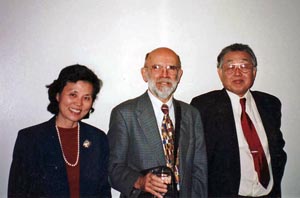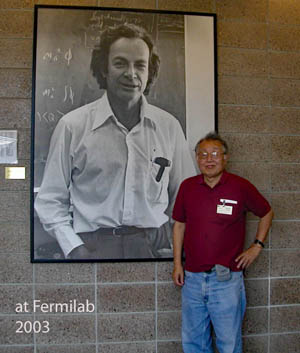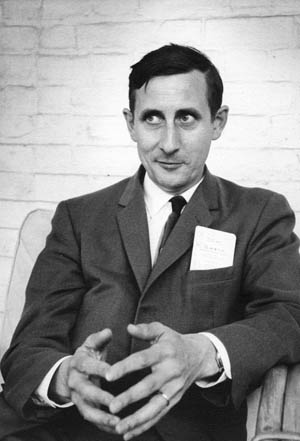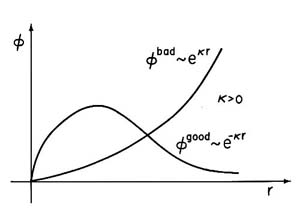Dashen-Frautschi Fiasco
- On April 29, at the 1965 spring meeting of the American Physical
Society in Washington, Freeman J. Dyson of the Institute of Advanced
Study (Princeton) presented an invited talk entitled
"Old and New Fashions in Field Theory," and the content of his talk
was published in the June issue of the Physics Today, on page 21-24.
This paper contains the following paragraph.
- Dyson was talking about the paper by R. F. Dashen and S. C. Frautschi
published in Phys. Rev. 135, B1190 and B1196 (1964). They use
the S-matrix formalism for bound states.
Later in the same year, Steve Adler and Roger Dashen became full professors at the Institute for Advanced Study. Naturally, they were admired by their colleagues, and many young physicists studied Dashen's paper on the neutron-proton mass difference. I was one of those who studied the paper carefully during the summer of 1965. I then published a paper in the Physical Review [142, 1150 (1966)].
There are however "good" and "bad" approximations. I showed in my paper that Dashen and Frautschi use the formula
|
-
How could those two distinguished physicists make this kind of
mistake? If you solve the Schrödinger equation for negative
energy states, there are two solutions: "good" and "bad." We then
impose a localization condition to eliminate bad wave functions.
This results in a discrete spectrum of bound-state energy levels.
Thus a slight departure from a given energy level will result in
a bad wave function.
Click here for an article on this subject.
- I am indeed fortunate to have an excellent education in physics. I took
my first-year quantum mechanics when I was a senior (1957-58) at
the Carnegie Tech (now called Carnegie Mellon University). Michel Baranger
was the professor, and taught me why bound-state energy levels are discrete.
I still remember those good and bad wave functions he drew on the blackboard.
In 1997, I attended his 70th birthday celebration held at MIT. My wife and I posed with him in this photo. We were very happy!
Dashen and Frautschi use the S-matrix formalism where the bound-states appear as poles in the complex energy plane. A slight mislocation will lead to the inclusion of the bad wave function. This is precisely the course of the so-called "Dashen-Frautschi Fiasco."

|
Toward a New Research Program
Feynman was on my side!
- After publication of my paper, many voiced objections based on the
belief that Princeton could not have made this kind of mistake or
misjudgment. There were also many who knew Dashen's calculation was
wrong, but they were not sympathetic to me. Their assumption was that
I would disappear from the physics world. One prominent Princeton
professor told me wave functions have nothing to do with physics and
everything should come the S-matrix and the current algebra.
Since then, I became devoted to wave functions. In 1970, I was very fortunate to find a very important person who shared the same ideology as mine. His name was Richard P. Feynman. People these days ask me what connection I have with Feynman. This was the very beginning of my Feynman connection. Yet, it takes time to transform ideology to concrete results in physics. For this, I lived in isolation for fifteen or twenty years (depending on how to count). It was like living in prison. The person who pulled me out of prison was Eugene Paul Wigner, and I am forever grateful to him.
-
I am standing in front of Feynman's portrait at the entrance of
Fermi Lab's Feynman Computing Center (June 2003).
As for the wave functions, I was particularly interested in their localization property, as you can see from the "good" and "bad" wave functions. The burning issue was and still is whether the hydrogen wave function localized in one Lorentz frame appears to be localized to observers in other Lorentz frames. This is a well-defined problem, and I enjoyed working on this problem in the past. I enjoy giving invited talks on this subject under current titles, such as symmetries of extended particles, covariance of Feynman's parton picture, Feynman's rest of the universe, squeezed states, Feynman's decoherence, Wigner's little groups, and other trademarks of current interest.
- You may visit my Scope of Research page to find out what I am talking about.

